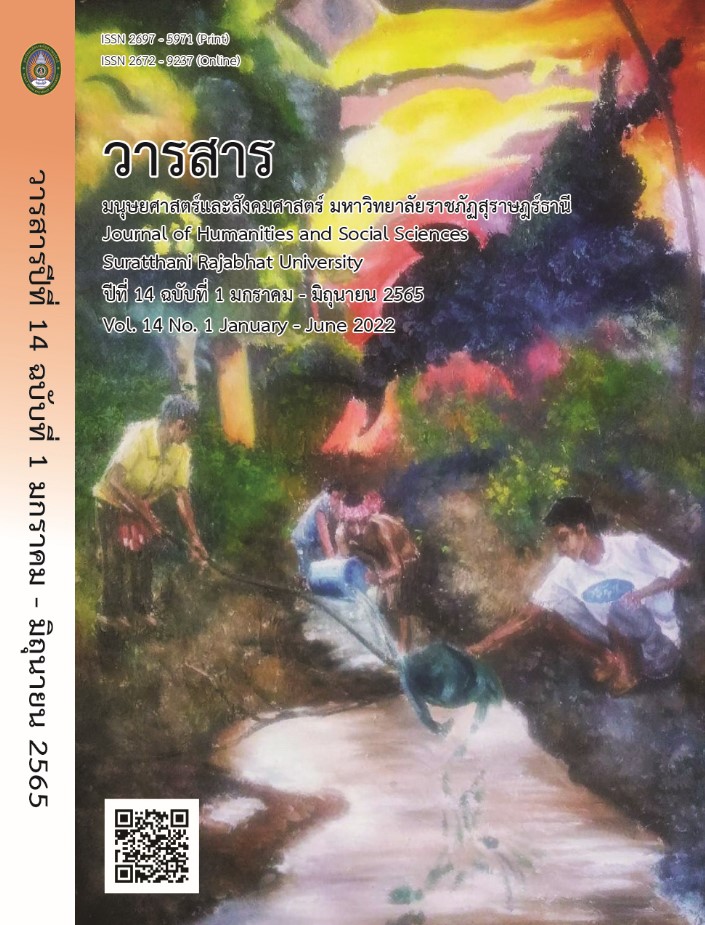Evolution of Thai Courts
Main Article Content
Abstract
The Thai court has evolved systematically to suit the customs and traditions, and the regime is fair to the people equally. In the Sukhothai period, the King himself was the judge. Later in the Ayutthaya period, many Thai courts arose in various jurisdictions, the judges in the name of the King and used until the reign of King Chulalongkorn (Rama V) established the Ministry of Justice and led various courts. They are under the Ministry of Justice. The military court is under the Ministry of Defense. It was developed continuously until A.E. 1997, which promulgated the Constitution of the Kingdom of Thailand A.E. 1997 (No.16). It has designated the Court to have four courts: the Constitutional Court, the Court of Justice, the Administrative Court, and the Military Court until now. It can be seen that the Thai courts have developed accordingly and are suitable for the era. Many civilizations recognize it, and the evolution of the Thai courts will provide a better understanding of the legal process of justice. The Court should add laws that can be applied to different cases that enable people to read,
easily understand, and accept that the substance is truly fair.
Article Details

This work is licensed under a Creative Commons Attribution-NonCommercial-NoDerivatives 4.0 International License.
All published manuscripts have been verified by peer-peer professors in the fields of humanities and social sciences. Reprinting of the article must be authorized by the editorial staff.
References
กฎหมายตราสามดวง เล่ม 1 (พิมพ์ครั้งที่ 3). (2537). กรุงเทพฯ: องค์การค้าครุสภา.
กรมศิลปากร. (2525). ประวัติศาสตร์กรุงรัตนโกสินทร์ เล่ม 2 รัชกาลที่ 4 – พ.ศ. 2475.
กรุงเทพฯ: อมรินทร์การพิมพ์.
กิจบดี ก้องเบญจภุช. (2561). หลักกฎหมายมหาชน. กรุงเทพฯ: มหาวิทยาลัยรามคำแหง.
พจนานุกรมศัพท์วรรณคดีไทยสมัยสุโขทัย. (2544). ศิลาจารึกพ่อขุนรามคำแหงมหาราช
หลักที่ 1 (พิมพ์ครั้งที่ 2 แก้ไขเพิ่มเติม). กรุงเทพฯ: ราชบัณฑิตยสถาน.
ราชบุรีดิเรกฤทธิ์, พระเจ้าลูกยาเธอ กรมหมื่น. (ร.ศ. 121). พระราชบัญญัติในปัตยุบัน เล่ม 1.
กรุงเทพฯ: โรงพิมพ์ลหุโทษ.
ร.แลงกาต์. (2526). ประวัติศาสตร์กฎหมายไทย 1 มูลนิธิโครงการ. กรุงเทพฯ:
ไทยวัฒนาพานิช.
พระธรรมนูญศาลทหารบก พระพุทธศักราช 2465. (2465, 13 ธันวาคม) ราชกิจจานุ
เบกษา. เล่มที่ 39. หน้า 386 - 427.
พระราชบัญญัติจัดตั้งศาลปกครองและวิธีพิจารณาคดีปกครอง พ.ศ. 2542. (2542, 10
ตุลาคม). ราชกิจจานุเบกษา. เล่มที่ 116 ตอนที่ 94 ก. หน้า 1 - 69.
รัฐธรรมนูญแห่งราชอาณาจักรไทย พุทธศักราช 2560. (2560, 6 เมษายน). ราชกิจจานุ
เบกษา. เล่มที่ 134 ตอนที่ 40 ก. หน้า 1 - 60.
สถาบันปรีดี พนมยงค์. (2548). กฎหมายตราสามดวง ฉบับพิมพ์มหาวิทยาลัย
วิชาธรรมศาสตร์และการเมือง แก้ไขปรังปรุงใหม่ เล่ม 1. กรุงเทพฯ: สุขกายใจ.
เทพรัตนราชสุดาฯ สยามบรมราชกุมารี, สมเด็จพระ. (2549). บันทึกเรื่องการปกครองของ
ไทยสมัยอยุธยาและต้นรัตนโกสินทร์ (พิมพ์ครั้งที่ 2). กรุงเทพฯ: จุฬาลงกรณ์
มหาวิทยาลัย.
สมหมาย จันทร์เรือง. (2546). ระบบศาลและพระธรรมนูญศาลยุติธรรม. กรุงเทพฯ:
วิญญูชน.
เสนีย์ ปราโมช. (2509). ประชุมปฐกถาและคำอภิปรายของ ม.ร.ว.เสนีย์ ปราโมช.
กรุงเทพฯ: รวมสาส์น.
แสวง บุญเฉลิมวิภาส. (2546). ระบบศาลและพระธรรมนูญศาลยุติธรรม.
กรุงเทพฯ: วิญญูชน.


